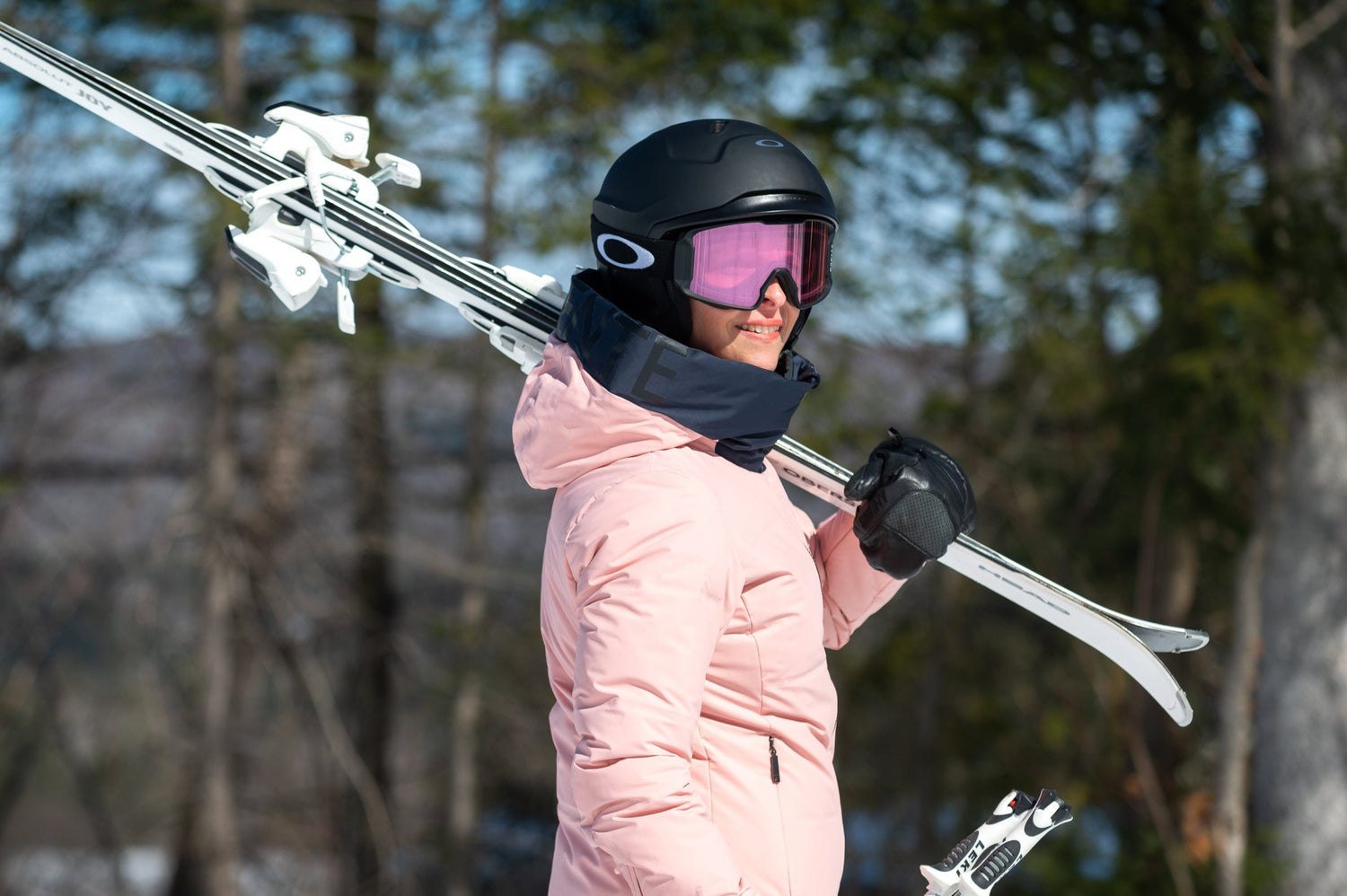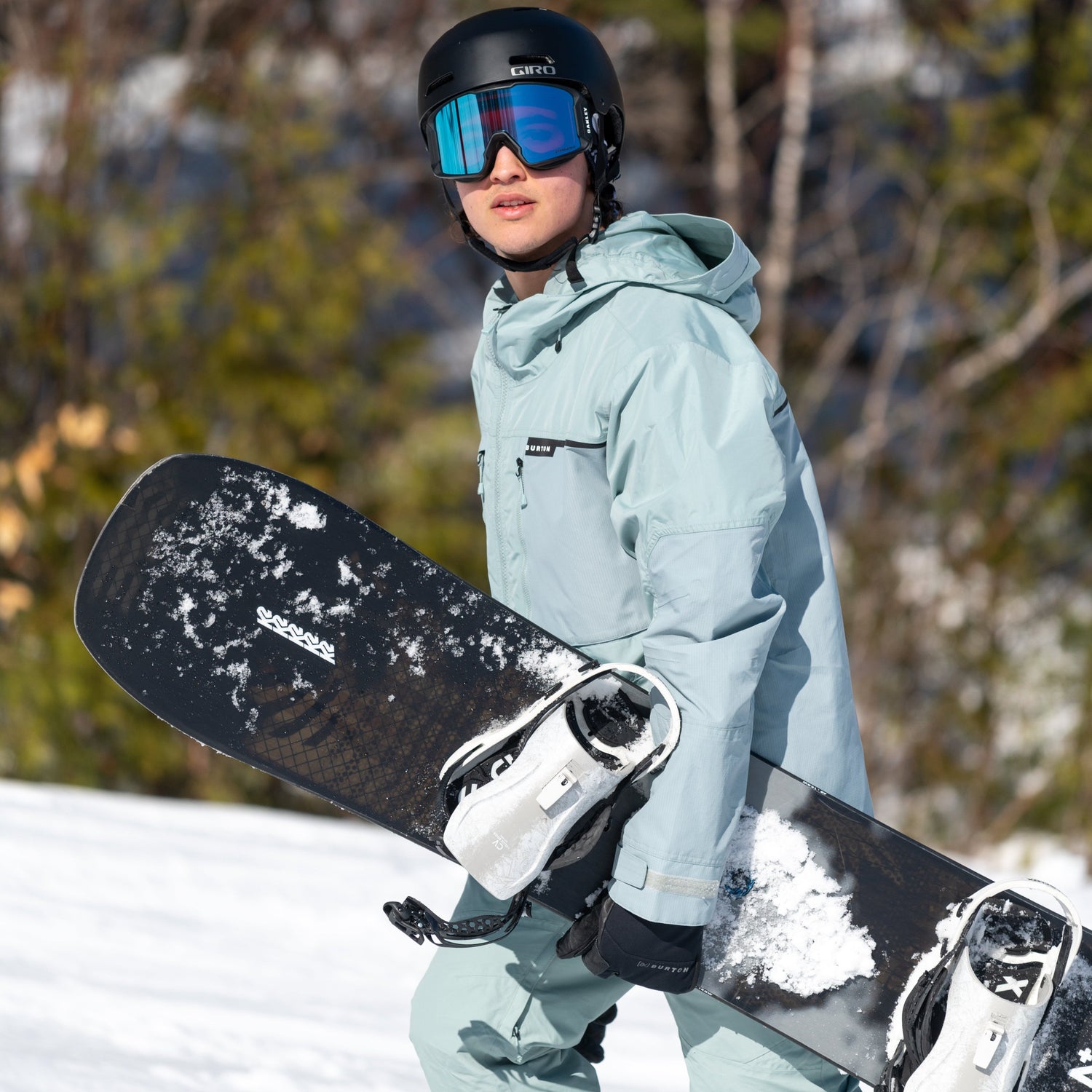How a ski boot should fit really depends on how much you value warmth and comfort versus performance and lightning-fast response. Generally, better skiers place a premium on performance while casual skiers value their comfort. But regardless of your skill set, your new ski boots should fit as snug as possible in the shop, because they’re only going to get bigger and looser and sloppier with wear.
The Three Measures of a Boot
Achieving that snug fit begins by matching the size and shape of your feet and calves plus your abilities, needs and budget to both the ski boot liner and the shell.
1. The liner, without the shell, should feel like a padded, second sock with a stiff tongue and back. It should hug your foot and leave your toes just enough wiggle room.
2.The shell, without the liner, should be just big enough to accommodate your bare foot, plus no more than two fingers. First, place your foot in the shell. Standing up, push your toes forward till they touch the front of the shell. There should be barely enough space to slip two fingers between your heel and the back of the boot for a comfort fit and no more than one finger for a performance fit.
3. The upper cuff should feel like a pair of hands that are snugly holding your shin and lower leg, while two more hands (the overlap shell) envelop your foot. When you put on your reassembled boot and buckle it up, it should feel like all four hands are locked in unison keeping your foot and, especially, your heel firmly in place.
With the reassembled boot unbuckled, the boot should feel somewhere between very snug and tight. Your foot should have no room to move forward, backward or sideways. Your ankle should be aligned with the boot’s heel cup. Once you’re buckled in and the power strap has been closed, your feet should feel like they’re snugly, but otherwise comfortably encased in the boot. Your feet should not feel squeezed or cramped, nor should you feel any hot spots or pressure points. If you do, let your boot fitter know where the boots hurts, and how.
When you stand up, flex your ankles and bend your knees, there should be zero lateral play, and the boot should flex forward with you. Under no circumstances should you be able to lift your heel out of the heel pocket.
A Word About Foot Beds
Advanced and expert skiers and racers who place a premium on performance should seriously consider buying ‘custom’ foot beds or ski orthotics. These ‘custom’ foot beds or insoles match the precise shape and contours of the soles of your feet and can provide additional support and stability. Because of how it supports your foot, a custom foot bed can actually give your foot a shorter, narrower profile, so that you can squeeze it into a smaller-sized boot for an even closer, snugger and more precise fit.
Settling Into Your New Boots
As a general rule, it takes about five or six days of skiing for your foot and the liner to finally settle into the shell. During those first few days, your boots may feel extremely tight, especially in the early morning when your feet are swollen after a good night’s rest. During this break- or settling-in period, you may want to ski with the bottom two buckles completely undone until you can comfortably do them up at their loosest setting.
You may also want to take your boots off at lunchtime to give your feet a rest. By the end of the fifth or sixth day, your boots will feel like perfectly sculpted and moulded extensions of your feet and lower legs. Your skis will turn on command, and instantly relay vital information back to you via your boots. That’s called control. And that is the essence of skiing.
Tips for Achieving that Perfect Fit
When buying new ski boots, bring your old ones with you. By studying them, a skilled boot fitter can learn much about your stance, how often and how hard you ski while you can fill him/her in on what you liked and disliked about them.
Make sure your feet and ski socks are clean and dry. Wear your lightest or thinnest ski socks during the fitting. This bears repeating: your new ski boots will only get bigger and looser with use. Wear shorts or baggy pants, so your boot fitter can study your feet, lower legs, knees and stance. Are you knock-kneed or bowlegged? Do the cuffs or uppers have to be realigned? Do you really need cants?
If you must err in size, always buy the smaller, snugger boot. A good boot fitter can grind, punch, boil, heat and otherwise increase a good quality shell by up to one full shoe size. There’s little anyone can do to make an oversized boot smaller.





